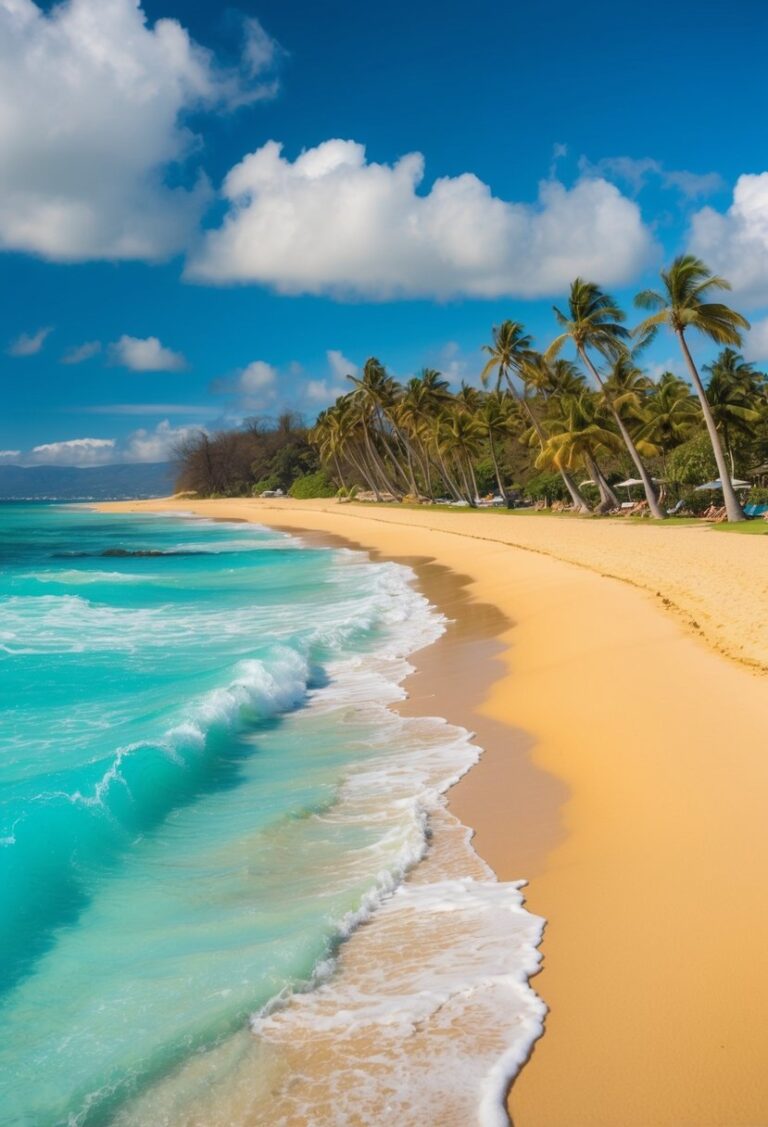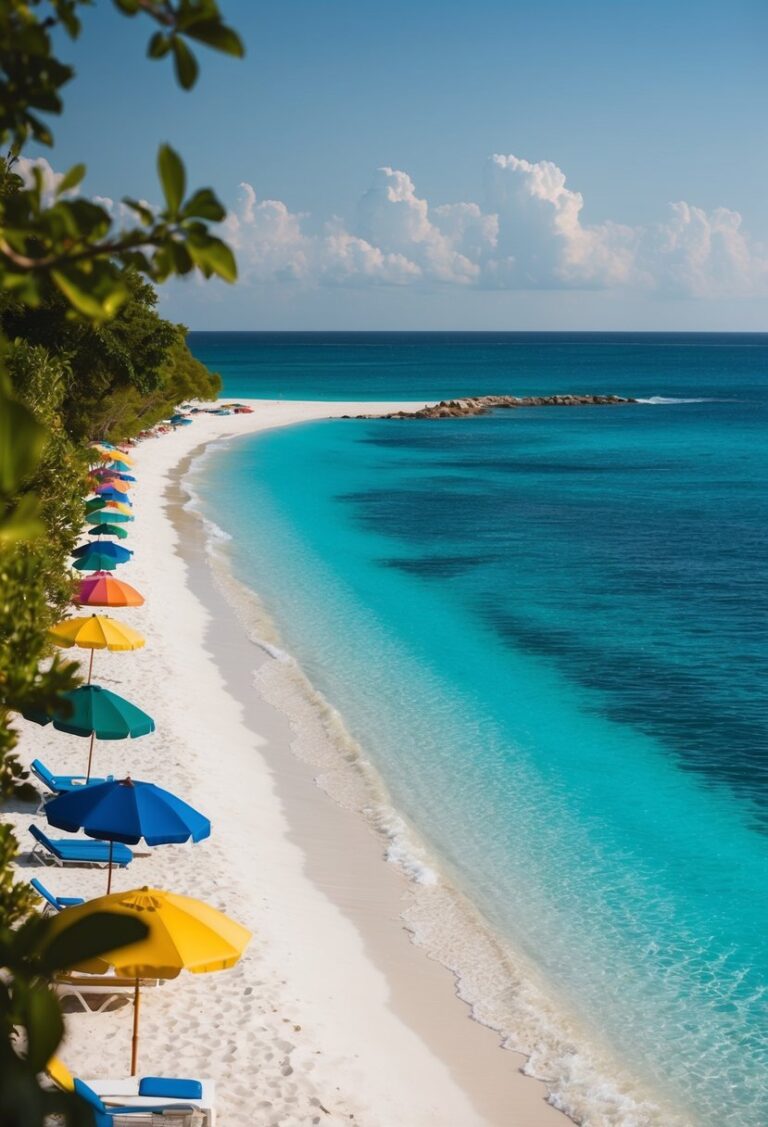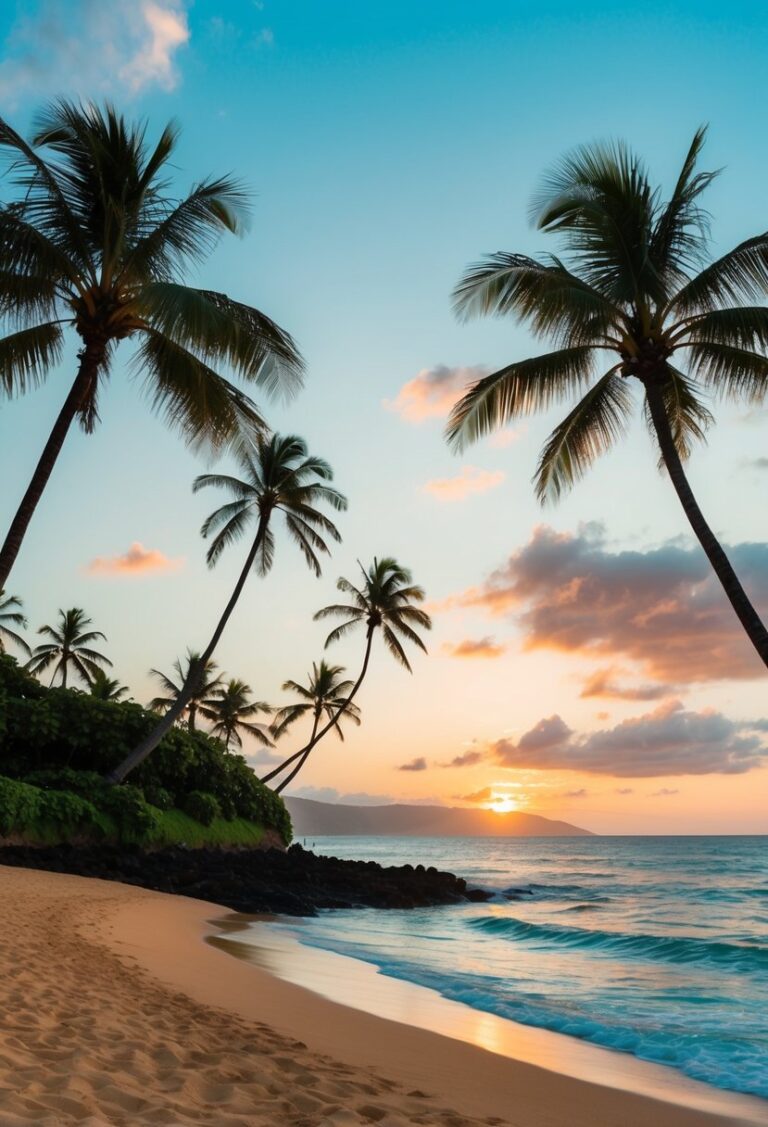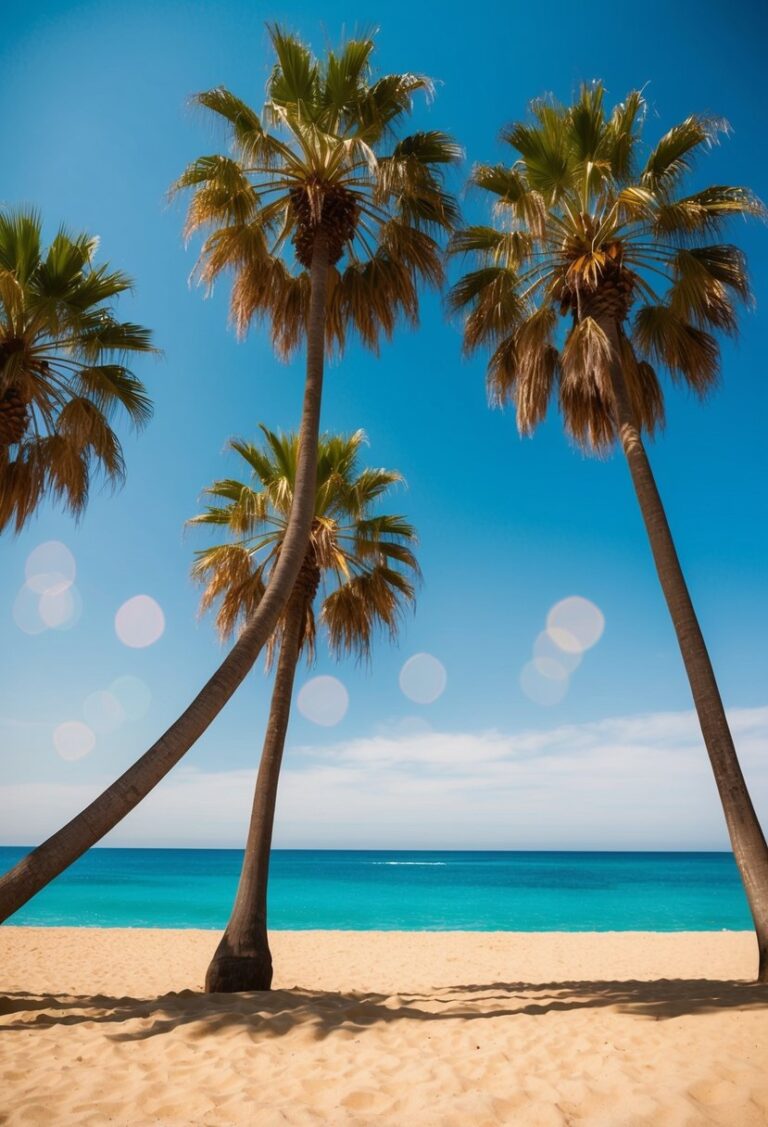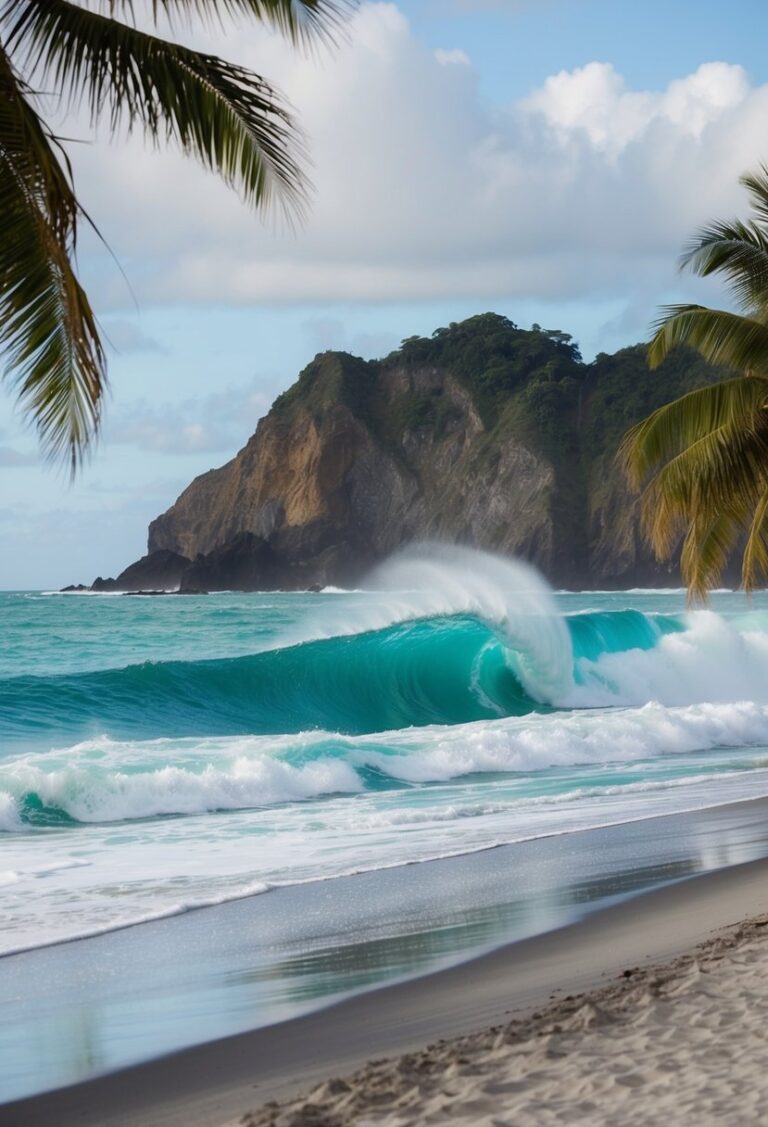5 Best Beaches in Hawaii: Unveiling Paradise for Your Next Getaway
Hawaii is known for its stunning landscapes and beautiful beaches, attracting visitors from around the world. Travelers often seek the best sandy spots to relax, swim, and enjoy outdoor activities. This article highlights five of the best beaches in Hawaii, showcasing their unique features and what makes them worth a visit.
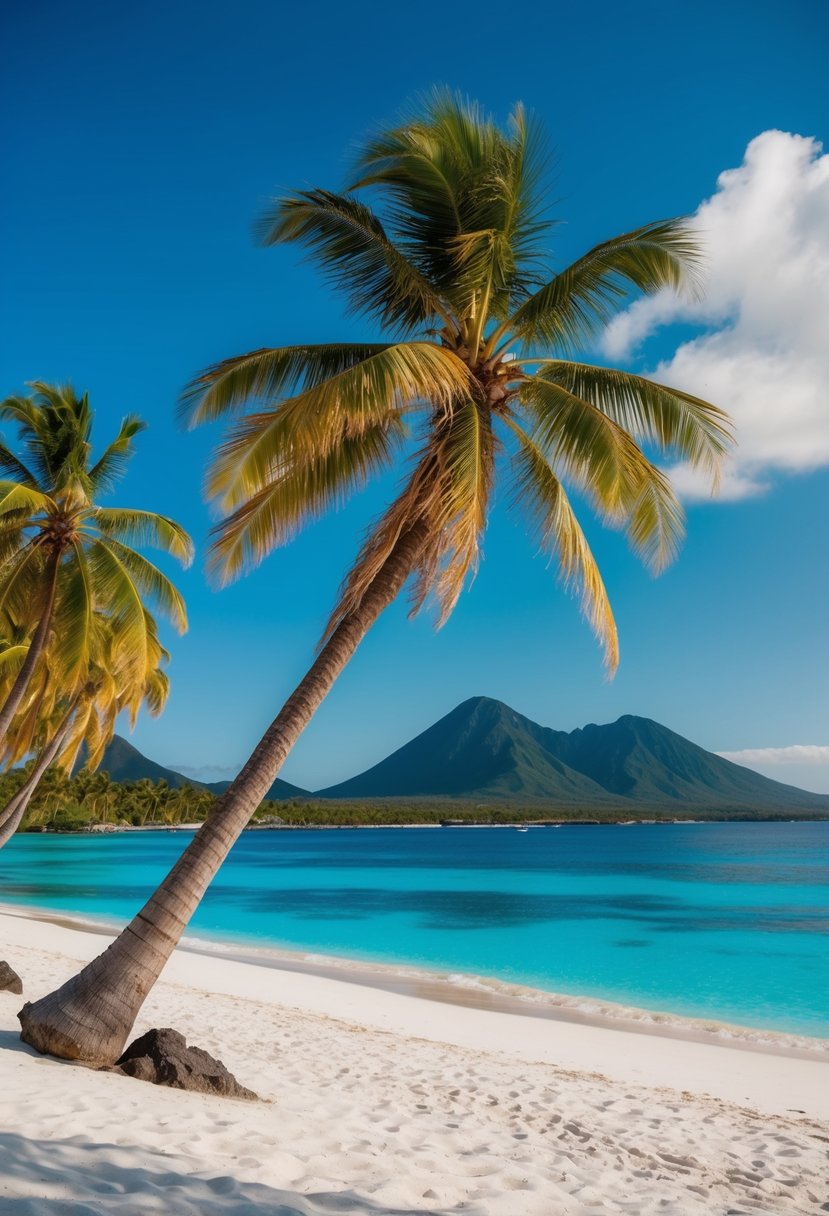
Whether looking for pristine waters for snorkeling or vibrant shores for sunbathing, Hawaii has something for everyone. The islands offer a mix of popular and hidden gems, catering to various preferences and interests. By exploring these top beaches, visitors can make the most of their Hawaiian experience.
Lanikai Beach

Lanikai Beach is known for its stunning beauty and turquoise waters. Located on the windward coast of Oahu, it is often ranked among the best beaches in the world. The name “Lanikai” means “heavenly ocean,” which reflects its picturesque setting.
The beach features soft, powdery sand that is perfect for lounging. Many visitors enjoy swimming and kayaking in the clear water. The beach is also a fantastic spot for taking photos, especially with the Mokulua Islands visible just offshore.
Lanikai Beach is less crowded than some other beaches in Hawaii, allowing for a more relaxed atmosphere. This makes it a favorite for families and those seeking tranquility. The surrounding palm trees add to the beach’s tropical charm.
Visitors often praise the breathtaking sunrises visible from the shore. This natural beauty attracts travelers from around the world. With its combination of scenic views and calm waters, Lanikai Beach remains a top destination in Hawaii.
2) Waikiki Beach

Waikiki Beach is one of the most famous beaches in the world. It stretches approximately 1.5 miles along the south shore of Oahu. This beach is known for its soft sand and clear, blue waters.
The area offers a variety of activities, including swimming, surfing, and sunbathing. Waikiki is ideal for families, as it has gentle waves, making it safe for young children. Many visitors enjoy taking beginner surf lessons here.
Kuhio Beach, part of the Waikiki area, features a stone wall that keeps larger waves out. This creates a calm, lagoon-like environment suitable for kids and families. Restrooms and showers are also nearby for convenience.
Waikiki Beach is surrounded by hotels, restaurants, and shops, making it easy for visitors to access amenities. The lively atmosphere attracts many tourists each year.
Waikiki is not just a beach; it also has historical significance. It was once a playground for Hawaiian royalty. Today, it remains a top destination for travelers seeking sun and fun in Hawaii.
3) Hulopoe Beach

Hulopoe Beach is a stunning spot located on the island of Lanai. It sits near the Four Seasons Resort at Manele Bay, making it easily accessible for visitors.
The beach features soft white sand and clear waters. It is great for swimming, relaxing, and enjoying the sun. Snorkeling here is popular due to the vibrant marine life. Many visitors report seeing colorful fish in the tide pools.
The waves are moderate, which allows for bodyboarding, making it a fun option for those looking for adventure. The surrounding scenery is breathtaking, with cliffs and lush vegetation adding to its appeal.
Visitors can find facilities like restrooms and showers. The location is also perfect for a picnic or a day of fun in the sun. Users recommend arriving early for the best experience, especially during peak seasons.
Hulopoe Beach has received praise for its beauty. It is often listed among the top beaches in Hawaii, making it a must-see for beach enthusiasts. For a memorable day, Hulopoe Beach offers something for everyone.
4) Ka’anapali Beach

Ka’anapali Beach is one of Maui’s most popular beaches. It features a stunning stretch of golden sand that attracts visitors year-round.
The beach is located in West Maui and runs from the Sheraton Maui Resort to the Hyatt Regency Maui. This area offers beautiful views and plenty of space for sunbathing and swimming.
Snorkeling is a highlight at Ka’anapali Beach. The nearby Black Rock provides excellent opportunities to see tropical fish and marine life. Many snorkeling tours also operate in this area.
The beach is lined with various resorts, making it convenient for those wanting to stay close to the water. Visitors can also find restaurants and shops nearby, adding to the experience.
Ka’anapali Beach is family-friendly, with shallow waters suitable for children. It is a great spot for beach games, beach volleyball, and other activities.
Whether one seeks relaxation or adventure, Ka’anapali Beach offers a little bit of everything. Those looking to enjoy a vibrant beach atmosphere will find it here.
5) Hapuna Beach

Hapuna Beach is one of the most famous beaches on the Big Island of Hawaii. It is well-known for its beautiful white sand and clear blue water. This beach offers a stunning setting for swimming and sunbathing.
Visitors appreciate the spacious beach area, which stretches for half a mile. The soft sand makes it a great spot for relaxing and playing beach games.
Hapuna Beach attracts both locals and tourists. Many enjoy its scenic beauty and the opportunities for water activities. Snorkeling and paddleboarding are popular choices.
The beach is managed by state parks. There are facilities such as restrooms and showers for visitors’ convenience. A parking lot is available, but there is a small fee for non-Hawaii residents.
This beach often receives high rankings in lists of the best beaches in the U.S. It is a favorite for those looking to enjoy a classic Hawaiian beach experience. Many visitors return to Hapuna Beach time and again, drawn by its charm and beauty. For more information, visit its page on Hāpuna Beach.
Geography and Climate

The beaches in Hawaii are shaped by unique geological features and a warm tropical climate. Understanding how these elements work together helps explain why Hawaii is such an attractive destination for beachgoers.
Volcanic Origins of Hawaiian Beaches
Hawaii was formed by volcanic activity, making its beaches distinct. The islands are made up of five major volcanoes, including Mauna Loa and Kilauea. As these volcanoes erupted, lava flowed into the ocean, creating new land.
Erosion over time has naturally shaped the coastline. Waves break against the lava rocks, gradually forming sandy beaches. Some of the most famous beaches, like Waikiki, are known for their golden sand, which is a mix of volcanic glass and coral.
The unique geology also means that each beach offers different experiences. Some are rocky and rugged, while others are soft and sandy. This variety attracts many visitors seeking adventures like snorkeling or surfing.
Tropical Climate Influence
Hawaii’s tropical climate plays a crucial role in its beach experiences. The islands have warm temperatures year-round, averaging between 70°F and 85°F (21°C to 29°C). This makes Hawaii a popular spot for sunbathing and outdoor activities.
Rainfall varies across the islands, with some areas being quite dry while others receive heavy showers. The lush vegetation can often be seen behind many beaches. This greenery adds to the scenery and provides a habitat for local wildlife.
Trade winds from the northeast help keep temperatures pleasant. They create ideal conditions for water activities, like surfing and sailing. The warm waters surrounding the islands are home to diverse marine life, making the beaches not just beautiful, but also vibrant and full of life.
Cultural Significance of Hawaiian Beaches
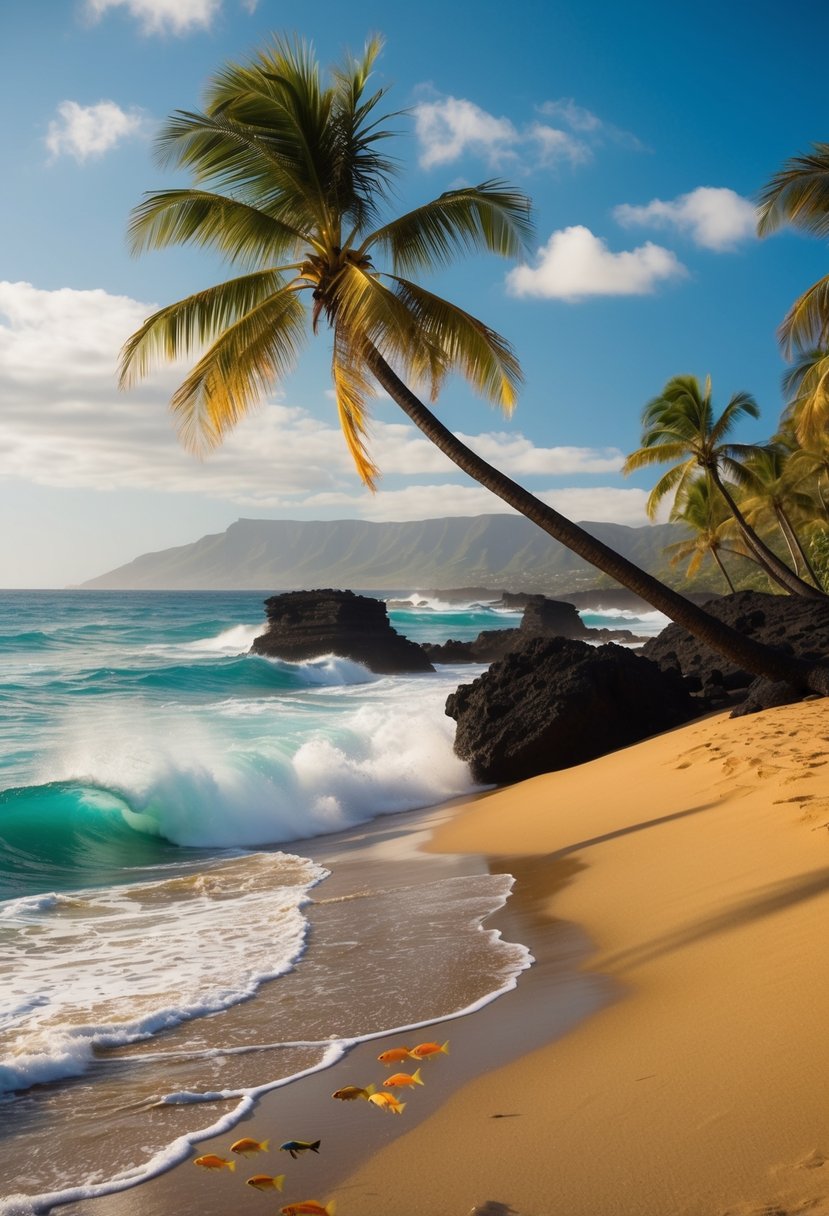
Hawaiian beaches hold deep cultural importance, reflecting the history and traditions of the islands. They are not just beautiful landscapes but also vital elements of Hawaiian life, influencing various art forms and cultural practices.
Historical Role in Hawaiian Traditions
Hawaiian beaches have been central to the islands’ traditions for centuries. They served as gathering places for families and communities, where rituals and ceremonies took place. Many beaches are linked to stories of Hawaiian deities and historical events, enriching the cultural landscape.
Fishing, swimming, and hula dancing are activities that have historical roots in these coastal areas. In ancient times, beaches were essential for sustenance and spirituality. Sea life provided nourishment, while the ocean was seen as a gateway to the gods.
The practice of using natural resources from the sea and land is a core value in Hawaiian culture. Understanding these connections fosters respect for the environment, which remains vital to Hawaiian identity.
Impact on Hawaiian Art and Music
The natural beauty and spiritual significance of Hawaiian beaches have profoundly influenced local art and music. Artists often draw inspiration from the ocean’s colors and the landscapes surrounding the beaches. This artistic expression can be seen in paintings, crafts, and sculptures that celebrate the natural world.
Music, particularly traditional Hawaiian music, is deeply intertwined with themes related to the sea. Lyrics often tell stories of love, longing, and connection to nature. Instruments such as the ukulele and slack-key guitar showcase the sounds of Hawaii, echoing the rhythm of the waves.
Festivals and performances take place on the beach, reinforcing the importance of these locations in the local arts scene. The integration of beaches in cultural expressions highlights their significance, offering both residents and visitors a rich experience of Hawaiian heritage.

